Cross-Curricular School Trip To Leipzig
City of Music, Culture and History, Leipzig was the scene of the Peaceful Revolution of 1989 leading to the fall of the Berlin Wall and the reunification of Germany.
Highlights
Walk the 5km music trail in this city of great composers
GDR secret police at the Stasi Museum
Leipzig’s world class zoo
St Nicholas Church and sites of the Peaceful Revolution
Hardenhuish SchoolWonderful support throughout the trip and excellent knowledge of the area visiting
Suggested itinerary
What's included*
*Please note, entrance fees where applicable are not included in typical price – contact us for more details
Suggested excursions
Discover Leipzig’s musical heritage on foot by following the 5km Music Trail through the centre of the city. Each one of the 23 locations is marked by a steel insert in the road and has both German and English commentary.
This interactive museum presents the life and work of Johann Sebastian Bach and his family through a permanent exhibition and educational workshops. The historic building which houses the museum used to house the Bose family who were friends and neighbours of the Bachs. Photo: Andreas Praefcke CC BY 3.0, via Wikimedia Commons.
A visit to this museum at the Kulturforum presents a perfect chance for students interested in music to explore some of the 2200 instruments on display, some of which date back to the 16th century. Objects including a portable harpsichord once owned by Prussia’s Queen Sophie Charlotte, flutes from the collection of Frederick the Great and Benjamin Franklin’s glass harmonica.
Six distinct themed areas recreate the natural habitats of the 850 animal species you can see in the Zoo. The emphasis is on education and conservation through guided tours and keeper talks.
Enjoy a day of fun in the largest Amusement Park in the Saxony region. Situated just outside Leipzig, the park is a world of adventure with mythology themed rides such as The Flight of Icarus and The Curse of the Pharaoh. For the bravest, Huracan is a rollercoaster which features a 32-meter-free fall and 5 loops. Pirate performances, knight tournaments and shows take place regularly in the park.
The Monument commemorates the Battle of the Nations which took place here in 1813 between Napoleon and the unified Prussian, Swedish, Russian and Austrian forces. It ended with the defeat of Napoleon’s forces and cost over 100,000 lives. The Monument is 91 meters high and has large stone statues, and climbing 364 steps allows visitors to reach a viewing platform to enjoy spectacular views over Leipzig.
Started in 1556, the Old Town Hall houses the Museum of City History. It contains a Ballroom which is 53 meters long and which is used for concerts and cultural events. The square is the location of the twice-weekly Farmers’ Market (Tuesdays and Thursday) and of the city’s Christmas Market.
This is the only Mendelssohn’s house that still exists and it was his last home. Visitors can really get a feel for his life on the second floor apartment and see original music sheets, watercolours and letters all written and painted by the composer himself. The Music Salon is still used nowadays for concerts. Photo by Mealisland CC BY-SA 4.0, via Wikimedia Commons.
Arguably the most famous of Leipzig’s shopping arcades, this is an L-shaped historic passage which contains a number of boutiques, restaurants, bars and exclusive shops. The famous restaurant “Auerbachs Keller” – which Goethe called his favourite wine bar – is also here.
Dating back to the 12th century this church is the home of Leipzig’s famous St Thomas Boys Choir which performs here on a Friday and Saturday. Johann Sebastian Bach was choirmaster here for 27 years from 1723 and his tomb can be seen in the choir. The Church reformer Martin Luther preached in the church in 1539 and a plaque commemorates the start of the Reformation.
The former Stasi HQ of Leipzig now houses the Memorial Museum. Visitors learn about the methods and history of the GDR secret police and how they repressed the populace. Using the original HQ rooms the museum displays equipment for the monitoring of post, a masking workshop and a reconstructed cell. Image by Appaloosa CC BY-SA 3.0, via Wikimedia Commons.
Highlights include paintings of the late middle ages, Dutch works from the 17th century and 19th century German Romantic Art. There is a Hall dedicated to Max Beckmann and works by Max Klinger. The New Leipzig School is represented and there are over five hundred works of art from the former GDR. Image by LutzBruno CC BY 3.0, via Wikimedia Commons.
This is one of Europe’s leading museums of arts and crafts including textiles, ceramics, porcelain, furniture, glass, metals and wood and stone sculptures. Housed in an imposing building constructed in 1925 the collection includes a significant number of exhibits of art nouveau and art deco pieces.
This massive former gasometer is now the home of a 360° panoramic art installation by the artist Yadegar Asisi. The themes change on an annual basis with the current installation being the wreck of the Titanic and The Promise of Modernity. The world’s most famous shipwreck 3,800 metres under the sea is explored through a multi-media installation.
Take a tram out of the city centre to discover Leipzig’s dynamic contemporary art scene. This former cotton mill, the largest in continental Europe, is now home to eleven galleries and over one hundred workshops and the base of the New Leipzig movement. Pre-arranged guided tours gives access to some of the galleries. The nearby Kunst Kraft Werk is an open exhibition space with changing collections.
Designed by Walter Gropius and constructed in 1925/26 from glass, steel and concrete the iconic modernist Bauhaus Building in Dessau was built as a new type of Design School. Together with the Masters Houses it is recognised by UNESCO as a World Cultural Heritage site. The visit can be combined with a visit to the Garden Realm Dessau-Woerlitz an example of 18th century English style landscape design.
The small town of Wittenberg is also known as Lutherstadt and is considered the birthplace of the Protestant reformation. See the Castle Church where Martin Luther is said to have nailed his 95 theses to the doors attacking papal abuses and the sale of indulgences. See Luther’s home where he lived with his wife and six children which is now a museum.
Although this impressive castle has a history spanning a thousand years, it is best known for its role in World War II as a German military prison for high ranking officers of the Allied Forces. Guided tours of the castle explain the ingenious methods devised by the prisoners to escape this fortress, which was considered to be escape-proof. The castle museum contains artefacts and uniforms used in the escape attempts.
Leipzig’s traditional Christmas Market dates back to 1458 and takes place in the market square around the Old Town Hall. With around 250 stalls this is a great opportunity for students to improve their language skills and enrich their cultural understanding.



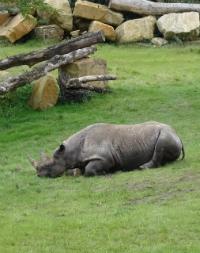

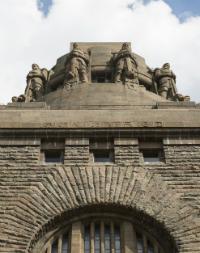
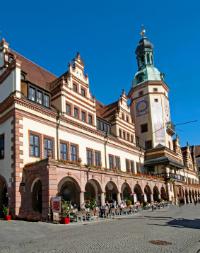





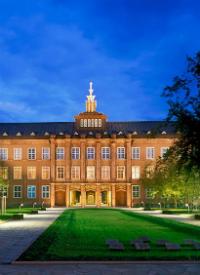



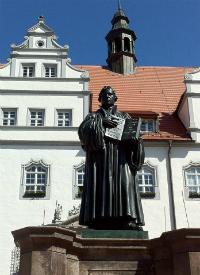


Typical accommodation
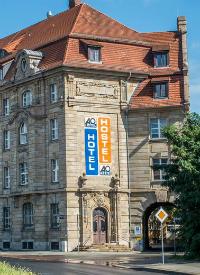
Why groups like it:
Facilities:
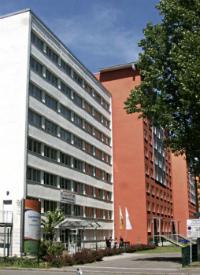
Why groups like it:
Facilities:
Learning outcomes
Subject focus
Students can:
- Experience learning outside the classroom in another country – the language, history, culture, art, music, geography and religious studies
- Practise speaking a foreign language
- Build confidence and learn to value the skills and techniques needed for personal and team success
- Broaden the mind with the study of another culture
- Discover and have fun with fellow students and teachers
Student outcomes
Students will have had an opportunity to:
- Visit a foreign country and experience another language and culture
- Gain independence and self-confidence
- Strengthen existing friendships and make new friends
- Understand more about history including the Reformation, the fight against Napoleon, WWII, the Cold War and the peaceful revolution of 1989
- Understand personal organisation, co-operating and working with others in a variety of environments



